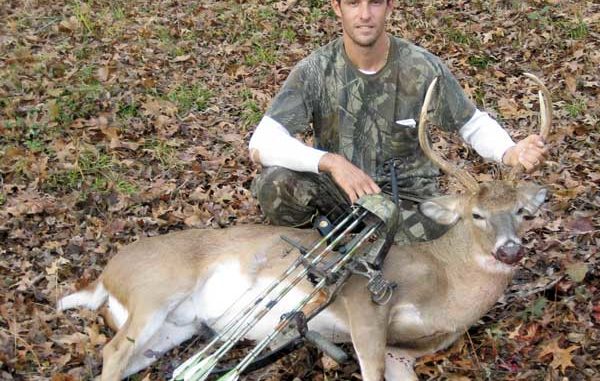
It’s late in the season, and bucks have been smelling humans for four months. But louisianasportsman.com’s Widowmaker and others have strategies to make the late-season the best time of the year.
Russell Scarbrough got off work at 6 p.m., too late to actually do any hunting. But he went ahead and drove to the public tract of land he planned to hunt the next few days and slept in the truck.
The next morning, Scarbrough was up early and heading into the woods.
“I really had no clue where I was going to hunt,” he said.
Finding an ATV trail snaking along a bayou, the 34-year-old Berwick hunter started walking.
“I figured I would just take off walking and looking for sign and possibly jump some deer to get an idea of where they were hanging around,” Scarbrough said.
After walking a pretty good distance, movement caught his eye.
“I stopped and looked off into the woods, and saw three does that had been coming down a trail right to me,” he said.
Hunter and deer froze, each waiting for the other to make a mistake.
“We played the stare-down game for probably a minute or so, with the does bobbing their heads up and down trying to get me to move,” Scarbrough said.
Finally, the big lead doe simply turned around and walked back the way the three animals had come.
Scarbrough still remained perfectly still, letting the deer just walk away.
“I looked at my watch, and it was 7:15 a.m.,” he said.
Most hunters would have rolled their eyes, grumbled under their breath about busting deer and ruining a potential hot spot, and continued scouting. The man known to louisianasportsman.com readers as “Widowmaker,” however, couldn’t have been more excited.
“I knew exactly where I wanted to hunt the next morning,” Scarbrough said. “I knew right then that I was possibly going to shoot a deer.”
After placing the stand near the trail on which the does were walking, the die-hard hunter forced himself to look for another stand site instead of climbing and hoping the deer would walk back by.
The next morning, however, Scarbrough was sitting in the cluster of trees overlooking the game trail.
“When it gets to 7 a.m., I’m thinking, ‘It shouldn’t be long now,’” he said.
Moments later, he saw movement down the trail and, right on cue, three “familiar-looking” does came into view.
“I grabbed the bow and drew back as they passed,” Scarbrough said.
As soon as the largest doe reached a small opening in the underbrush, an arrow streaked to the target.
“She only went 30 yards after the shot,” he said.
The excited hunter sat back to wait, and glanced at his watch.
“It was 7:19 a.m.,” he said.
That hunt took place on Jan. 26, 2007, after the deer on this land had been subjected to almost four months of pressure.
Deer hunting is fairly easy when the season first opens, before every inch of the state is crawling with hunters. Just set up a stand, throw out some corn or find a natural feeding area, and your odds are pretty good that a deer will happen along.
That all changes as the season progresses, however. Deer smell humans everywhere, as hunters repeatedly sit in the same stands or walk around scouting out new hunting areas. All-terrain vehicles roar through the woods several times a day as hunters race back and forth to their stands.
All of the activity makes deer skittish, and it’s not long before they shut down.
Baton Rouge’s Derek Hudnall says that’s when you can pretty much forget food plots and big box stands on private land.
“Early in the season is when you start seeing a lot of deer in the food plots, but I’m a big believer in climbers, especially in the late season,” Hudnall said, adding that does often will continue to feed in green patches, but bucks will refuse to move into the open until it gets dark.
“How many times do you see a deer just inside the woods?” Hudnall asked. “You know it’s there, the does are looking at it, but (the bucks) know there’s something going on and won’t come out.”
So Hudnall believes in moving into the woods.
“You’ve got to get out of the food plots and get into their habitat,” he said.
Scarbrough said he and two buddies, Davie LeBlanc and Mike Robison of Berwick, learned that it wasn’t enough to just find an active trail and set up a stand.
“When we go in the woods, we’re going to walk, walk, walk until we find that sign,” he said. “We just walk excessively.”
The sign they’re looking for depends on what phase the deer are in. If the deer have already finished breeding, the trio look for feeding areas and bedding areas.
“Late in the season, after the rut, it’s all about the food,” Scarbrough said. “We find oaks still dropping or browse areas.”
However, finding some acorns on the ground or locating preferred browse isn’t enough. Scarbrough and his friends want to be sure deer are using the areas regularly.
“A lot of times we’re looking for deer droppings,” he said. “But when we’re talking about deer crap, it doesn’t even count unless we see three piles or more.”
Click here to read the rest of this article, which first appeared in the December 2008 issue of Louisiana Sportsman.


